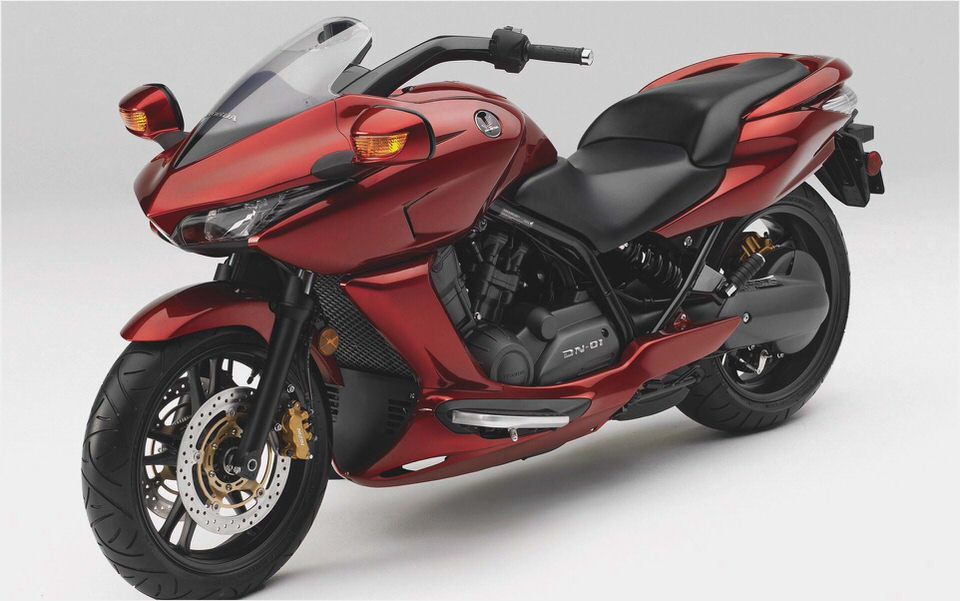
Okay, so it may not “technically” be a scooter, but to dismiss it on a technicality would be a mistake.
Words by JEREMY BOWDLER, photography by LOU MARTIN
There’s a touch of the USS Enterprise about the new Honda DN-01, boldly going where no one has gone before.
And if you close your eyes, you can almost see Captain James T. Kirk and Mr Spock cruising around some newly discovered planet on the DN-01, just before teleporting back to the mother ship. Maybe it’s the futuristic lines of the machine, or the seamless way the new transmission works but riding the DN makes you feel like you’re sampling tomorrow’s machine, today.
Certainly that’s what everyone else thinks, judging by the smiles, waves, comments and thumbs up and general open-mouthed bewilderment the bike creates wherever and whenever you ride it. It’s a bewilderment shared by many, Honda included if you read some of the material surrounding the launch earlier this year. Apparently many people looked at the HFT (Human Friendly Transmission) and immediately consigned the bike to the ranks of scooters.
Which is a little odd, since three of the things variations of the transmission have appeared in are a motocross bike that won the All-Japan series in 1991, the TRX500FA Quad of 2003 and a range of lawnmowers. None of which remotely resemble the thing parked downstairs.
Okay, to be fair, the stepless transmission did appear in a scooter, the Honda Juno of 1962, but, since that was 46 years ago, I reckon it hardly counts. Ask not what your vehicle can do for you, but what you can do with your vehicle. With these words (or as I remember them) John F. Kennedy showed himself a visionary, though he ripped them off from Marcus Tullius Cicero, one of the leading Roman rappers of the Republic, back in the ‘hood at least until he had his head cut off in 43BC.
Anyway, with that little bit of sage advice if it’s lasted more than 2000 years it can’t be all bad I set out to be wooed and won by or disappointed in the DN-01. That first ride took a little doing. I could start the bike okay, but we weren’t going anywhere in a hurry until I discovered how to “turn off” neutral with the rocker switch on the righthand switchblock.
Until you know, it’s just as effective an anti-theft deterrent as the Honda Ignition Security System-equipped ignition lock. N for neutral and D for drive.
Easy once you get the hang of it. Apparently the switch is there so you can manually select neutral when you stop, though I never needed to, so I never used the switch unless to select drive. There’s a matching rocker switch on the lefthand block, with a +/- signs as well as D and S and this allows you to toggle between Drive and Sport mode when you are in Drive mode.
Flick the Mode switch (on the front of the right-hand switchblock, where the passing light is to be found on the left-hand block) and the transmission changes from stepless automatic to a six-speed, paddle-style “’box” with the +/- switch allowing you to row up and down the ratios, bearing in mind that the DN-01 has an automatic override to stop you trying to take off in sixth, for example. Complex to write, easy to ride as I discovered. Turn the key, hit the button, hit the other button and accelerate away.
The manual shift was very smooth and very effective better than a Suzuki Burgman’s, for instance and on a par with the Aprilia Mana in terms of smoothness but I found it mainly useful for increased engine braking into a corner on the open road than for anything else. In town I never bothered with it and the same effect could probably be had more easily by hitting the Sport option into a corner instead.
The Sport setting operates much as the Burgman’s, so the rpm rise by about 1000 to put the engine closer to the meat in the powerband, thus offering increased engine braking as well. In the end, I just kept the DN in Drive.
It seemed easier and the bike is always operating at peak torque so the drive you get isn’t improved by flicking a switch. It’s just an interesting addition, though one that is probably necessary to get any red-blooded rider even looking at one on the dealer’s floor. So, twist and go. Good.
I like that. Gives me more space in the overcrowded head to concentrate on other stuff like braking points, lines, apexes and traffic. It also means I don’t have to wory about shifting points since I can’t see any of the tacho a bar graph across the top of the instrument panel since it is completely obscured by the opaque screen. The HFT makes it a very easy machine to ride in more ways than one.
As does the engine.
We’ve seen it before in the new Deauville and in the new Transalp so it has some pedigree and it has some poke. While 45kW at 7500rpm coupled with 64Nm of torque at 6000 won’t ever get you to warp speed Mr Solo, neither will it have Scotty calling out “She’s giving all she’ got Cap’n and she’s not going to take any more”. In any case, there’s more than enough to get away from any Klingon drivers and more than enough for a very pleasant ride out on the open road.
The riding position has a lot to do with this. Although it’s a bit cramped for my 195cm (my knees don’t fit under the tank scallops), the ‘bars to seat to footboard ratio is nigh on perfect. After a 240km run to check fuel economy, there was no stiffness, soreness nor any desire to stop.
The tiller-style ‘bars look a little odd to begin with, but the grips fall easily to hand and the DN steers beautifully, rolling in with no resistance on sweepers and with a sharpness in the city that belies its status as a “cruiser”.
Which, of course, it is. Ish. I found the riding position and the curvature of the seat meant I was sitting on the base of my spine rather than on my arse and I suspect it’d be different for a rider of more normal height.
Still, the padding and shape of the seat gave a most comfortable ride and, from a brief spin to return a bike, I can say the pillion seat is generous and comfortable and the grabrails are very good. It’s an interesting ride as a pillion since there’s none of the usual gearshift induced helmet knocking and few of the surges you get from a rider on a machine with fixed ratios. Very calm.
Very Zen. Very nice.
The brake lever has a six-way span adjustment, while the lack of any adjustment on the left-hand lever is probably due to the lack of any lever at all. There is a handbrake, mounted on the right below the tank, working a cable operated caliper on the rear disc. This oddity is necessary since, with the HFT, you can’t leave the bike parked in gear since the clutch take up is actuated centrifugally. No engine rotation, no transmission.
Ergo a handbrake.
Complementing the front brakes, the rear pedal is well placed on the footboard and is likely to assume far more of your general braking duties that you imagine. In addition to the excellent ABS, the DN-01 has Honda’s combined braking system the brake lever operates both front calipers, the pedal operates the rear caliper and one piston on the left-hand front caliper and this is the first time I have been completely convinced by the set-up.
Interestingly, the transmission seems to stop the bike flopping into corners if you chop the throttle, say in a low-speed roundabout for instance. On the downside, you do have to get used to the engine braking suddenly stopping as the clutch self-disengages when you’re going slowly enough. Every twist go scooter does it, so it’s no drama, just a quirk.
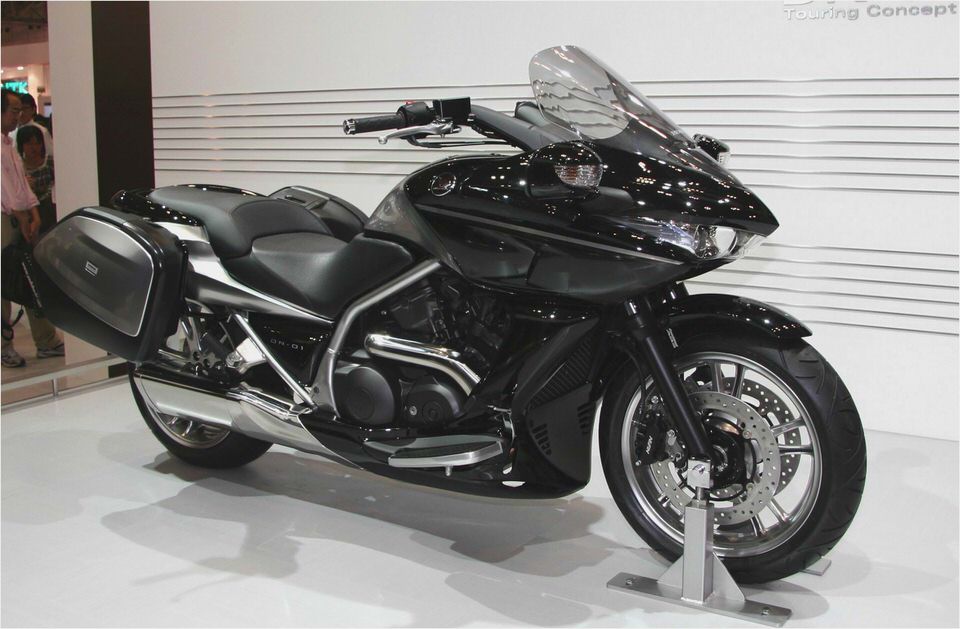
Riding the DN-01 was simply a matter of press foot, twist throttle, grin, repeat until the fuel runs out. And that took 243.6km until the last bar of the digital gauge was flashing. I managed to squeeze in 12.11 litres and that means, according to the press kit, I dipped into the three-litre reserve by 1cc.
Average economy was almost bang on 5L/100km which gives a range to dry of 300km. I wasn’t cruising particularly conservatively either, so you could expect better, depending on how/where you ride. I wasn’t cruising particularly conservatively either when I hit THE pothole. Wiseman’s Ferry Road, just south of Spencer.
Unsighted by a slight crest, I hit what looked like a trench sliced out of the road with a concrete saw, about 300mm deep. Whack. A slight shimmy, a quick settle and on we go.
I only noticed the buckled rear rim later.
Anyway, back to the starship. There’s no storage to speak of anywhere and hard luggage looks like it’d be a challenge to fit, so it’s throwovers if you want to cruise into the sunset, though strap fixing points are few and far between. More style than substance when it comes to the long road, it seems.
And that’s a shame, since it’s a very comfortable, competent machine in the wide, open spaces. I guess it all comes back to looking at the DN-01 from the point of view of what it is. And, to many, it seems the DN-01 is a concept machine made metal before anyone worked out where it fits in the line-up. It’s easy to dismiss it as a scooter that doesn’t have storage, or a motorcycle that doesn’t have gears, or a cruiser that can’t carry luggage.
But any of these perspectives ignores what the DN-01 does. It works, and works very well. Maybe people should stop trying to understand it and just boldly ride it, where no one has ridden it before.
WE COME IN PEACE
Despite the futuristic looks and swoopy styling, the real interest lies deep within the DN-01’s engine cases, inside the Human Friendly Transmission (HFT). Far from being a conventional CVT as found in most twist go scooters, the DN-01 offers a hydraulic, stepless transmission to deliver the drive from the 680cc V-twin to the shaft final drive.
The crankshaft drives an oil pump (using engine oil and thus removing the need for a separate oil system) creating hydraulic pressure. The pump is made up of an angled swash plate that rotates with the driven housing and drives a ring of pistons, splined to the output shaft, that deliver high-pressure oil via distributor valves to a second, matching ring of pistons that bear on another, fixed swashplate. The angle of this fixed swash plate can be altered via the ECU to vary the transmission ratio.
The pump pistons produce a hydraulic oil flow proportional to engine speed and a hydraulic pressure according to engine power output. As the fixed swash plate’s angle changes relative to the output shaft, the reduction ratio is changed. And this reduction continues until the swash plate is at 90 degrees to the output shaft, where a direct coupling occurs with a theoretical reduction ratio of 1:1.
The final part of the puzzle is the replacement of the original centrifugal clutch found on the transmission in its ATV incarnation. A lighter system was designed for motorcycle use and it takes the form of a centrifugal governor that opens or closes a hydraulic valve depending on engine rpm, thus acting as a clutch.
Okay, so that’s the theory
As published in TW SCOOTER MAGAZINE – 10/03/2009
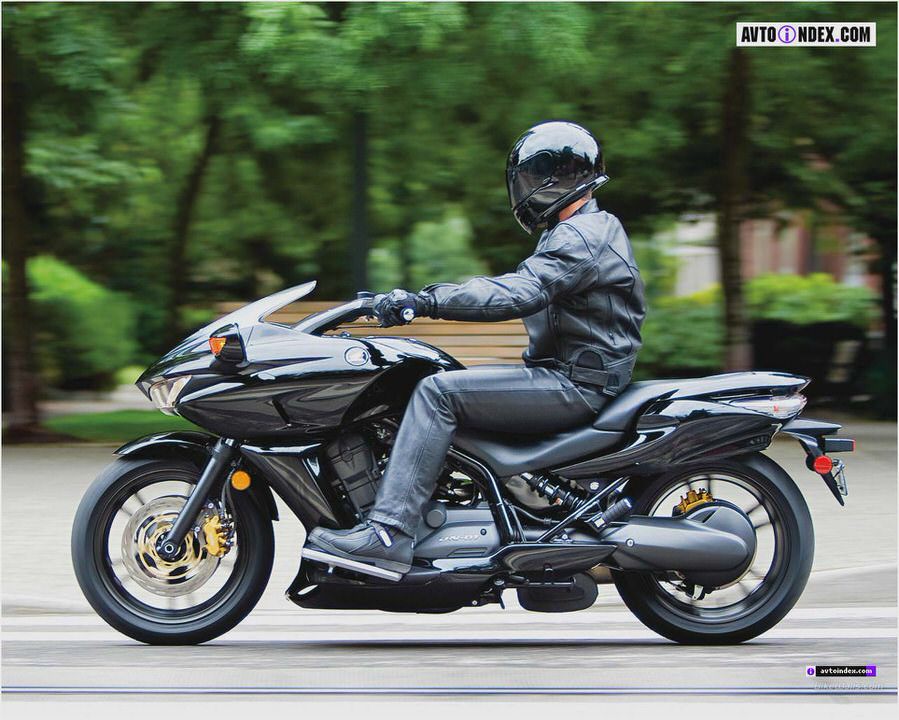
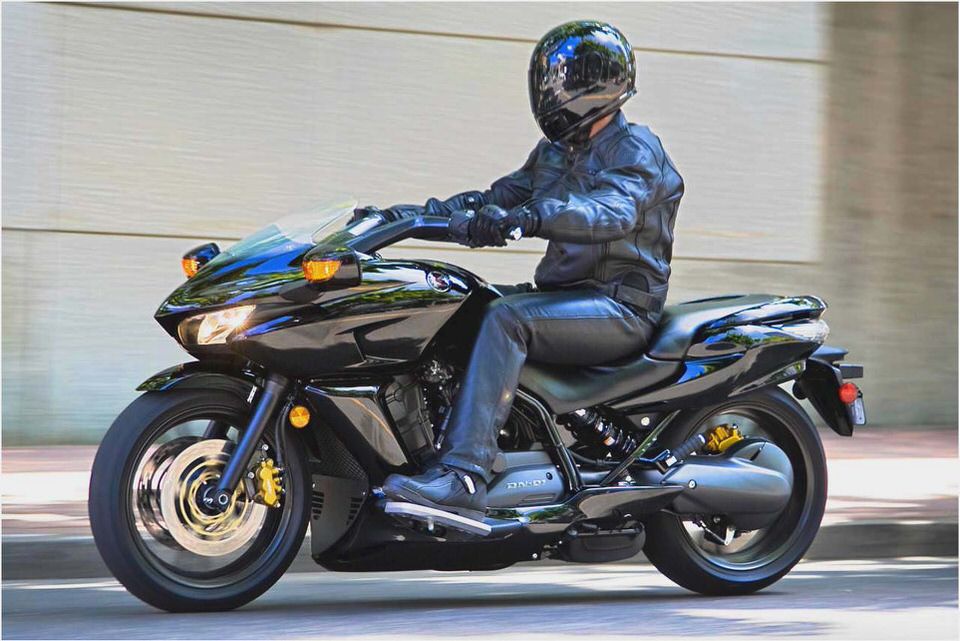

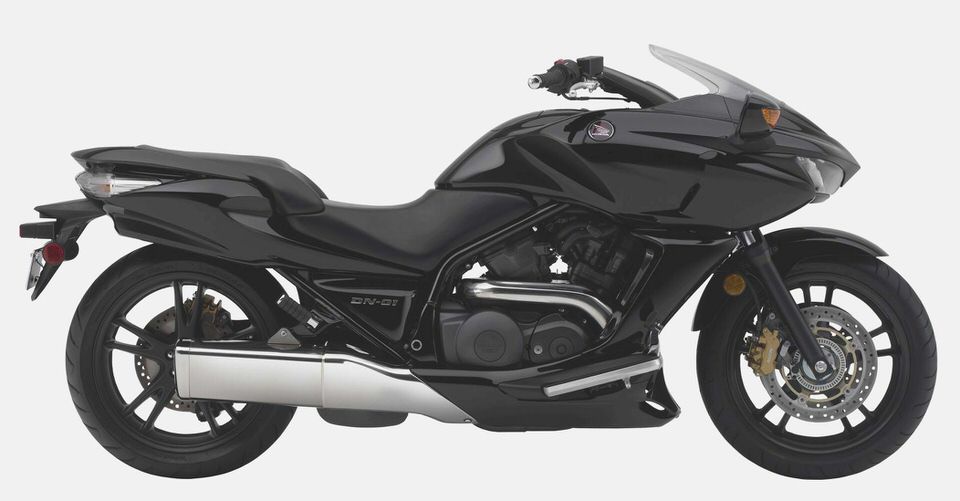
- MXA PRODUCT TEST: LSP T2 MX LAP TIMER News Motocross Action Magazine
- 2001 Honda CBR 929RR – Motorcycle USA
- 2008 Honda CBR1000rr Racebike Build
- Honda XR650L – 4000 mile report Adventure Motorcycling Handbook
- 2012 Honda CR-V – Businessweek
